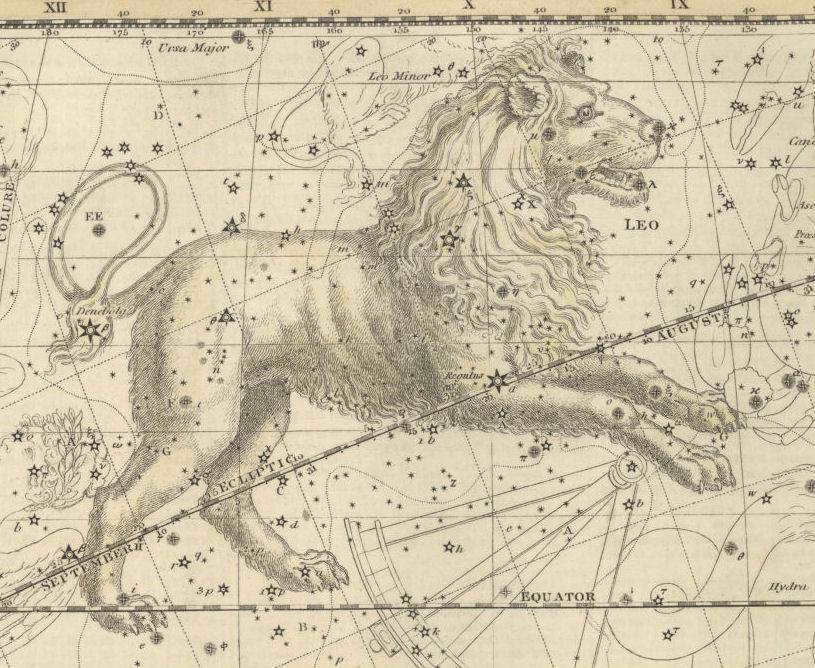The LION is a constellation that belongs to the zodiac. It is most visible during the months of March and April when it is at its highest point above the horizon. It is surrounded by neighboring constellations such as Virgo, Cup, Sextant, Cancer, and Leo Minor.
On a clear and moonless night, it is possible to see about 70 stars in the Leo constellation with the naked eye, although most of them are faint. The two brightest stars in Leo are Regulus, which is a bluish-white star of first magnitude, and Denebola, which is a star of second magnitude.
When mentally connected by lines, the brightest stars in Leo form a distinct geometric shape that resembles an elongated irregular hexagon. With a little imagination, this shape can be seen as the body of a lion with a majestic mane, created by the scattered faint stars near Regulus. The lion’s right paw is well defined by a cluster of stars, while the star Denebola shines at the end of the lion’s long and curved tail.
There are numerous fascinating binary stars, variable stars, and galaxies within the constellation Leo, but they can only be observed with high-powered telescopes.
One star of particular interest is Regulus (α Leo). It is approximately three times the size of the Sun and has a surface temperature of 14,000 K. Positioned at an angular distance of 3" from it is a dim star with a magnitude of 7 m,6 (not visible to the naked eye) and a yellow color, almost indistinguishable from our Sun. It is believed to be a companion to the star Regulus, as they both exhibit the same motion in space. However, the orbital motion of this companion star around Regulus has yet to be detected.
In close proximity to the star ζ Leo lies the radiant point of the Leonid meteor shower, which is most active from November 15 to 19. The peak of the shower occurs on November 17, with approximately 10 meteors per hour.
Particles from the Leonid meteor shower move in a closed orbit around the Sun. However, they are not evenly distributed within the orbit and form a “dense cloud” in one of its sections. When the Earth passes through this section of the Leonid Stream’s orbit, “star showers” are observed. The first recorded occurrence of such a Leonid shower was in 1799, with approximately 30,000 meteors registered per hour. Similar “star showers” from the Leonids were observed in 1833, 1866, and 1933. The most recent Leonid shower occurred in 1966, and it was truly a “shower” of stars, with the number of meteors recorded per hour reaching 144,000!
via
“Star showers” from the Leonids occur approximately every 33 years. The next anticipated shower is in 1999.
Humans have been aware of the Leo constellation since ancient times. The Egyptians were the ones who first gave it a name, and they did not associate it with myths or legends, but rather with recurring seasonal events.
In ancient Egypt, during the months of March and April, when the stars of the Leo constellation would appear high in the sky, almost at the zenith, there would be a period of intense heat. The fertile Nile valley would dry up, and the soil would crack under the unbearable heat. During this time, the terrifying roars of lions could be heard at night, as they roamed the desert in search of prey. No one dared to venture out into the desert, as it became a lion’s domain. This pattern would repeat itself year after year, which is why the ancient Egyptians named this part of the night sky the Lion. Thus, the king of beasts, the Lion, made its appearance in the starry sky.
According to legends, great kings were believed to be born under the Leo constellation. That is why the brightest star in the Leo constellation was named Regulus (derived from the Latin word “rex,” meaning king).
The Greeks believed that the constellation of the Lion was connected to the fearsome Nemean lion and one of Hercules’ great feats. After defeating the Titans, Zeus banished them to the dark Tartarus. The entrance to Tartarus was guarded by the hundred-armed Hecaton-Heirs, who kept watch over their formidable enemies. The Titans had permanently lost their power over the world, but Zeus’ struggle for control of Heaven and Earth was not yet over. He still had to conquer the last enemy – Typhon, a terrifying creature responsible for many disasters on Earth.
Gaea (Earth) was outraged by Zeus’ treatment of her children, the Titans, so she joined forces with Tartarus and gave birth to Typhon, a monstrous hundred-headed creature that constantly spewed flames in all directions. As Typhon emerged from the depths of the Earth, the entire planet trembled under its weight. The deafening roars of furious bulls and lions, the barking of dogs, and the horrifying hissing of snakes echoed across the Earth. The flames from Typhon’s dragon heads scorched everything in their path. Fear gripped both humans and animals, and even the gods were terrified. The Earth burned, and the infernal heat melted everything in its wake. Violent flames engulfed Typhon, and it seemed as though the air itself was on fire. Zeus fearlessly confronted Typhon, hurling lightning and thunder at him. The Earth and the Sky merged into a continuous blaze, reducing everything to ash. Zeus sizzled all one hundred of Typhon’s heads, causing the creature to collapse onto the Earth like a colossal rock. Typhon’s body was so hot that it melted everything around it, almost turning the Earth into a river of fire. Without hesitation, Zeus seized Typhon’s massive body and plunged it into the depths of the dark Tartarus, the birthplace of this monster. Typhon remained there forever. However, even in Tartarus, Typhon continues to threaten the gods and instill terror in people, unleashing terrible storms that sweep away everything in their path. Typhon’s fire penetrates through the mountains, causing rivers of fire to flow down their slopes. The most horrific event occurred when Typhon married Echidna. Together, they gave birth to terrifying monsters such as the two-headed dog Orthus, the three-headed dog Cerberus with a snake’s tail, the Lernaean Hydra, the Nemean lion, and others. Some of these monsters emerged on Earth and brought about terrible disasters and suffering for humans.
Typhon and Echidna left their offspring, a gigantic lion, in the mountains near the city of Nemea, thus giving rise to its name – the Nemean Lion. With its fearsome roar, the lion terrorized the surrounding area and left devastation in its wake. People and animals were gripped by fear whenever they heard its roar. People dared not leave their homes, famine struck, and diseases spread. The cries and lamentations of the people of Nemea could be heard far and wide. The entire Greece was aware of the unbearable calamity that had befallen them.
King Eurystheus commanded Hercules to kill the Nemean lion and bring its corpse to Mycenae. Hercules immediately embarked on his journey. Upon arriving in Nemea, he encountered a desolate, scorched land. All living creatures had sought refuge in their homes. No one could provide Hercules with the whereabouts of the lion’s lair.
Hercules spent the entire day wandering through the wooded mountainsides, but he could not find the monstrous lion anywhere. As the sun began to set, darkness descended. Suddenly, Hercules heard the terrifying roar of the lion, which had awakened and was waiting for complete darkness to begin hunting.
In a few enormous leaps, Hercules reached the lion’s den, a massive cave with two exits. He blocked one exit with enormous boulders and hid himself near the other exit, preparing his bow and arrows. Some time passed, and the lion emerged from the cave with a roar. Hercules showered the lion with arrows, but none of them pierced the monster’s tough skin, which was harder than iron. Hercules was unaware of the Nemean lion’s invulnerability to weapons. Realizing that his arrows were useless, Hercules discarded his bow and attacked the lion with a club. With one powerful blow to the head, Hercules stunned the lion, then gripped its neck with his mighty hands and squeezed it so tightly that he strangled the lion to death.
Carrying the enormous beast on his shoulders, Hercules returned to Nemea. There, he made a sacrifice to Zeus and established the Nemean Games in honor of his first great deed. During these games, all of Greece set aside its wars, and a universal peace prevailed.
Hercules brought the lion’s corpse to Mycenae. When Eurystheus saw the monster, he was so terrified by Hercules’ strength and power that he forbade him from entering Mycenae. Instead, he ordered Hercules to present evidence of his future tasks outside the city walls.
The mighty Zeus transformed the Nemean lion into a constellation, allowing it to shine in the sky and serve as a reminder of Hercules’ heroic feat, which saved humanity from this terrible disaster.
The star grouping known as Leo can be found in the Northern Hemisphere of our sky. It is one of the twelve constellations that make up the zodiac.
It is widely believed that Leo’s constellation was named after the powerful Nemean Lion, which was slain by Hercules.
In astrology, Leo is considered to represent a male, outgoing personality type.
The constellation of Leo is most visible in the springtime.
Directly below Leo’s constellation lies the head of Virgo, while to the right is the Sextant constellation. The stars that lie between these constellations belong to Leo.
The most luminous celestial bodies in the constellation Leo are:
- Regulus (α Leo, Alpha Leo) – with a magnitude of 1.36, it is known as the “heart of Leo”.
- Algieba (γ-1 Leo, Gamma Leo) – with a magnitude of 2.01, it is referred to as “the mane of Leo”.
- Denebola (β Leo, Betta Leo) – with a magnitude of 2.14, it is recognized as “the tail of the Lion”.
- Zosma (δ Leo, Delta Leo) – with a magnitude of 2.56.
- Algenubi (ε Leo, Epsilon of Leo) – with a magnitude of 2.97.
- Certan or Hort (θ Leo, Tetta Leo) – with a magnitude of 3.33.
It is worth noting that Algieba is a binary star system, where the names of the two stars in this pair are the same on the map.
On the right, there is another compact group of three galaxies: M95, M96, and M105.
Both of these clusters can be easily observed using a small to medium-sized telescope (although, a larger telescope would reveal more details).
If you have a telescope with a decent aperture, this region of the sky offers a great opportunity to observe numerous dimmer galaxies surrounding the Leo Triplet.
This is particularly true in the adjacent Virgo constellation, which is home to the renowned Virgo Cluster, an extensive collection of galaxies. On the map above, you can see two of these galaxies, M98 and M99.
If the “online sky map” website removes unnecessary labels and enables the display of faint galaxies, the sky surrounding the Leo constellation appears as follows:
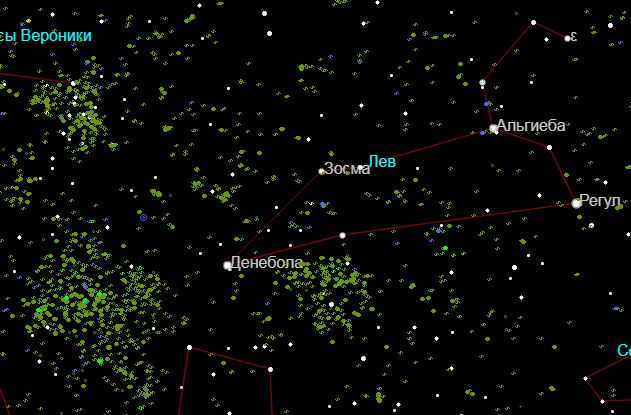
At this point, the Leo cluster becomes distinctly visible.
Locating the Leo constellation
The Leo constellation is most easily observed from February to March. During this time, it reaches its highest point in the sky around midnight. Additionally, the Sun is in the Leo constellation from August 10 to September 15.
In the central region of Russia, the Leo constellation does not rise above half the height of the sky.
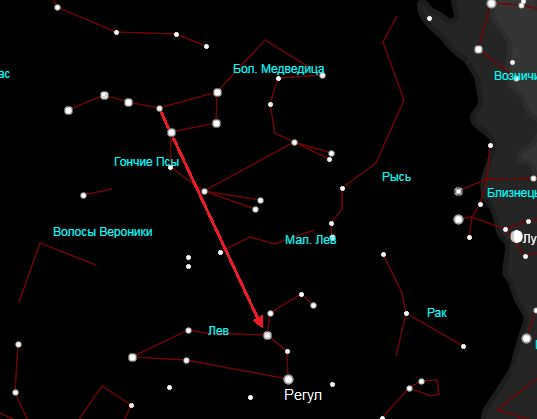
Locating the constellation Leo is a relatively simple task. By mentally extending a line through the two stars indicated in the Big Dipper constellation, at about two lengths of its “bucket”, you will come across a distinct group of stars forming the shape of a question mark facing right. This group of stars is known as the “Sickle” asterism and represents the head and chest of the Leo constellation. The brightest star in Leo, Regulus, can be found at the “point” of this imaginary question mark.
All six stars that make up the Sickle asterism are quite bright and can be easily seen in the night sky.
The constellation of Leo – fascinating trivia
The Leo constellation was first identified in the night sky by the ancient Sumerians, a staggering 5,000 years before the birth of Christ. The Sumerians referred to it as the “Great Canine”. Notably, this celestial formation also caught the attention of the Native Americans on the American continent.
Within the Leo constellation lies the epicenter (also known as the radiant) of the Leonid meteor shower, which is closely linked to the comet 55P/Tempel-Tuttle. The intensity of this meteor stream varies from one year to another, and it can be observed between November 14th and 21st each year.
Wolf 359, located in the Leo constellation, holds the distinction of being the fifth farthest star from the Sun. This particular star is a dim red dwarf, emitting a brightness measuring only 13.53 m. Its distance, calculated at 2.39 pc or 7.78 light years, places it at quite a distance from our solar system.
Leo, a prominent constellation, dominates the night sky during the spring season. It serves as a reference point for amateur astronomers in their quest to locate other constellations. Known for its abundance of fascinating celestial objects, Leo offers a plethora of sights that can be easily observed with a small telescope or even with the naked eye. This constellation graces the southern part of the night sky from February to March.
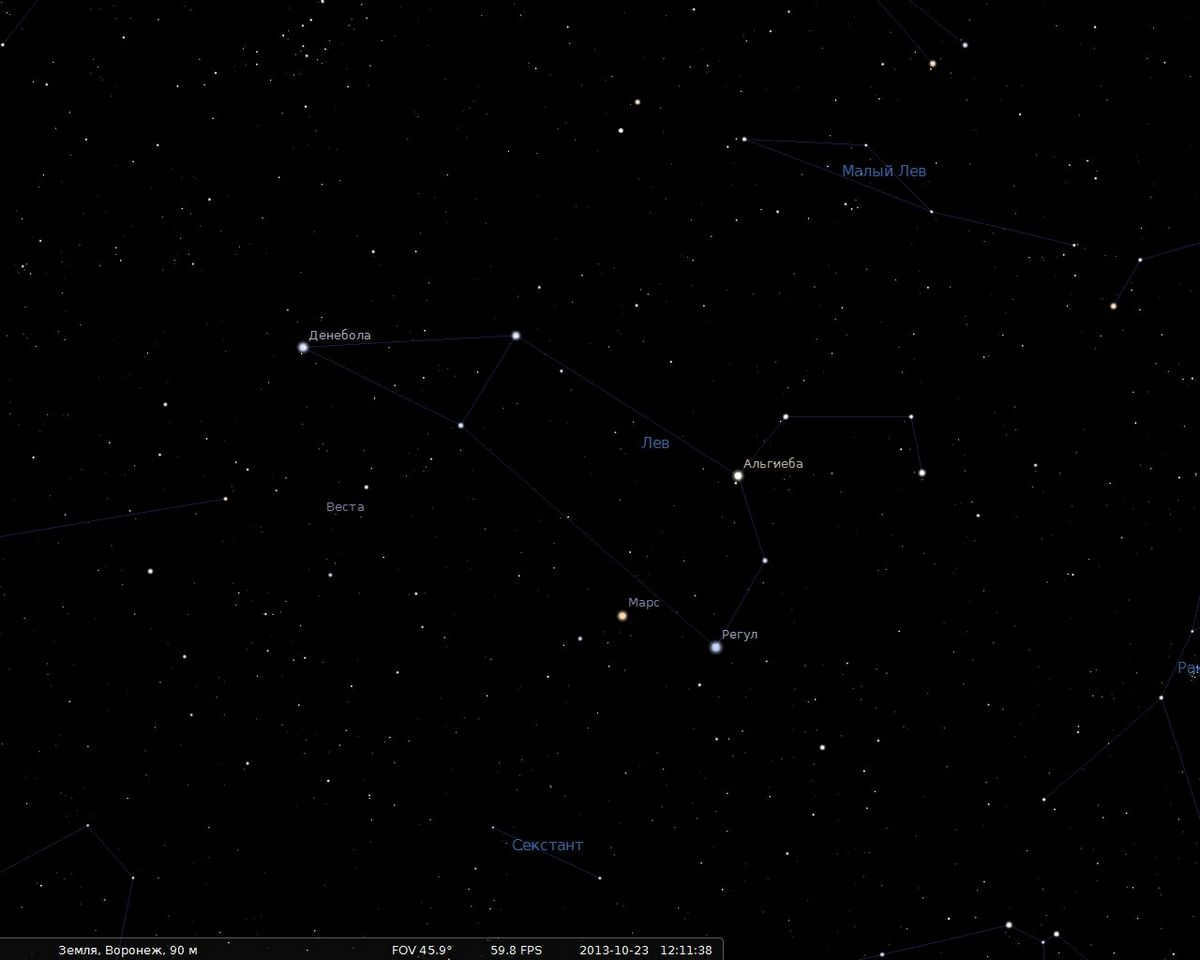
– Regulus is the primary star in the constellation of Leo, and it holds great significance as it is often associated with the heart. Positioned near the center of the constellation, Regulus shines as the brightest luminary, outshining our Sun by a factor of 160. This remarkable star resides at a distance of 85 light-years from us, which accounts for its remarkable apparent brightness.
Exploring the Rotation of Regulus
Denebola, on the other hand, takes the second spot in terms of brightness among the objects in Leo. Often referred to as the tail, Denebola is found at the outermost edge of the constellation.
Algeiba stands out as a captivating double star, counted among the most stunning ones in the night sky. It symbolizes a majestic mane. Upon closer inspection, one can observe that the slightly orange star has a striking golden companion. The orbital period of this double system is estimated to be around 510 years.

In the constellation Leo, there are several other interesting stars, including some double and triple stars. Among them are the stars known as 54 Leo and 88 Leo, which form a double star, as well as the star 90 Leo, which is a triple star. When observing the star 90 Leo closely, you will notice two prominent blue dots, along with a separate companion located a short distance away.
Stars that vary in brightness

Leo also has an interesting feature worth noting, which is the variable R Leo. This star has been known for a long time and its luminosity varies from a magnitude of 10 to 5. It is quite fascinating to observe this star during its period of minimum luminosity and witness its “ignition” phase, which lasts for 312.5 days.
Deep within the constellation lies another intriguing object known as Wolf 359 – a red dwarf that is located a mere 7 light-years away from us. Due to its low brightness, this star can only be observed through telescopes.

Located at the heart of the picture, we can see the vibrant orange star known as Wolf 359.
Exploring the Universe
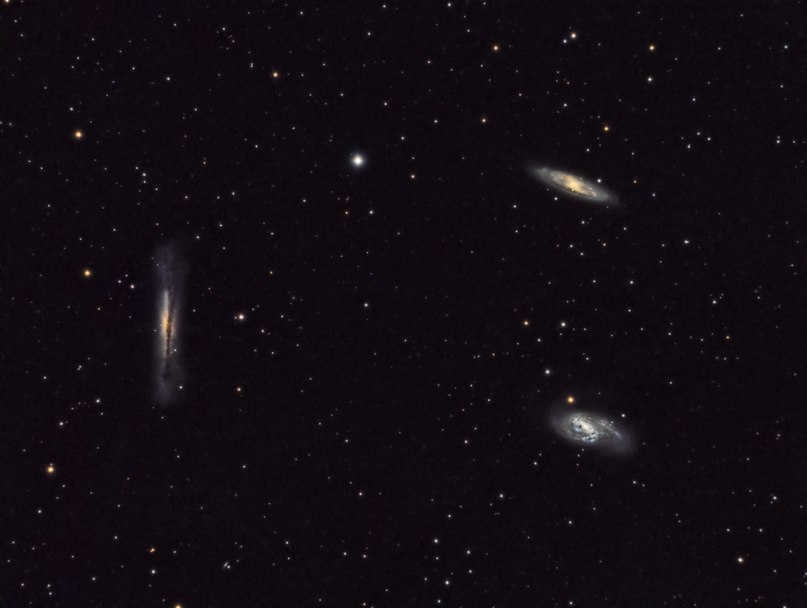
By using a telescope that is around 7-8 centimeters in size, you have the ability to observe more than just stars, but entire galaxies as well. If you focus your attention on the Leo constellation, you will easily be able to locate the “Leo Trio”, which consists of the NGC 3628, M 65, and M 66 galaxies. Out of the trio, M 66 is the largest galaxy. It is situated at a distance of 35 million light years away. The galaxy boasts a well-defined nucleus and arms that are positioned slightly above the galaxy’s plane. This peculiar effect is believed to be caused by the gravitational influence of its two neighboring galaxies. If you were to use a more powerful telescope, you would be able to observe and examine the structure of M95, M96, M105, and NGC 2903.
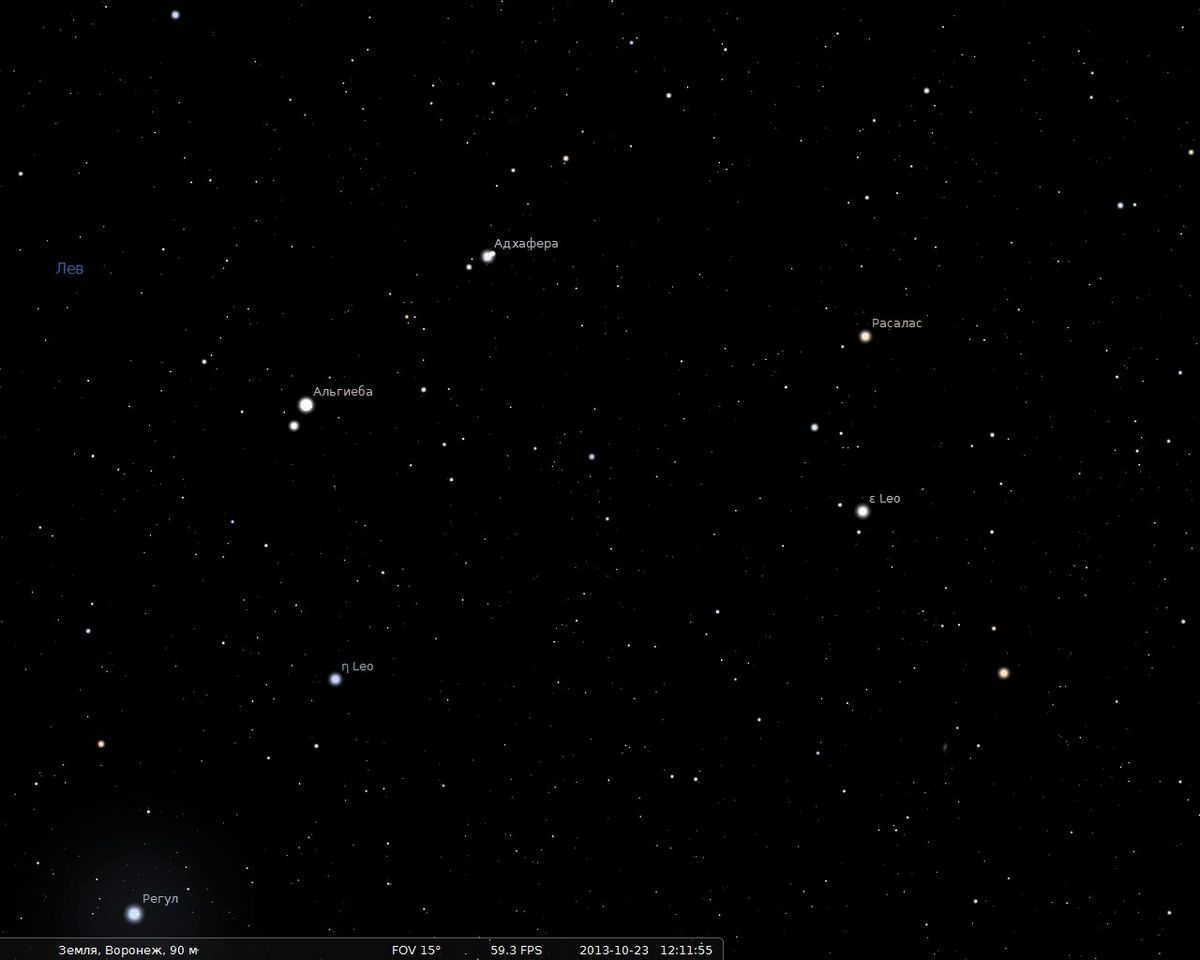
Within the Leo constellation lies a group of stars known as the “Sickle”. Comprised of six stars – α, η, γ, ζ, μ, and ε – this asterism takes the shape of a sickle or a question mark. At the tip of this celestial question mark shines the brightest star in Leo, Regulus.
Origins
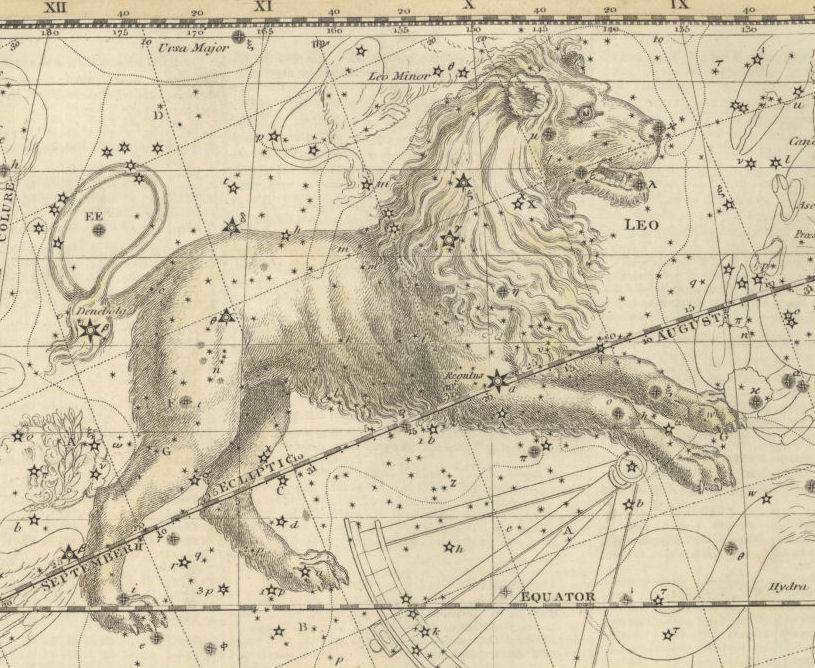
The constellation of Leo has been recognized for many centuries. Surprisingly, it has always been referred to by its current name. The Assyrians, Babylonians, Hindus, Persians, and Jews all observed this constellation and gave it the same title, honoring the king of animals.
This article presents a comprehensive Leo constellation review that provides fascinating insights into this celestial wonder.
A tale of the Leo constellation
The Leo constellation has been recognized by the Sumerians since ancient times, dating back 5,000 years, and was also documented in the Almagest catalog by Claudius Ptolemy. It is commonly depicted as the head of a lion with a flowing stream of water emanating from its mouth.
Description of the Lion constellation
The Leo constellation can be found in the sky between Virgo and Cancer. Its body is composed of four prominent stars – alpha, beta, gamma, and sigma – forming a trapezoid shape. A small arc of stars represents the “lion’s head.”
The brightest star within the constellation is Regulus, a blue-white star that is often overshadowed by the Moon due to its proximity. The second brightest stars are Denebola and Algieba. Another intriguing celestial object within the constellation is the star Wolf 359, a small, faint red dwarf.
Mythical Tale of the Birth of the Leo Constellation
This story is based on the epic legend of Hercules, who was commanded by King Eurystheus to complete a daunting task. Within the king’s domain dwelled a massive lion, possessing an impenetrable hide. This fearsome creature wreaked havoc by preying on livestock and humans alike. In order to bring an end to the lion’s reign of terror, Eurystheus dispatched Hercules to defeat the formidable beast.
The valiant hero fashioned a colossal staff from a wild olive tree. With great strength, he uprooted the tree, stripped it of any extraneous branches, and prepared himself for battle. Equipped with a quiver full of arrows and a sturdy bow, Hercules ventured forth to confront the lion.
A ferocious clash ensued. Despite his best efforts, Hercules found it impossible to pierce the lion’s robust hide. The strikes with his olive staff merely served to further enrage the creature. Left with no other choice, Hercules resorted to his own bare hands, ultimately overpowering the lion by strangling it. In this manner, both humans and animals were spared from harm, and justice was served.
The constellation Leo is known for its impressive beauty and notable stars. Among these stars are Regulus (Alpha Leo), Denebola (Beta), and Algieba (Gamma).
One distinctive feature of Leo is the asterism called the Sickle, which resembles a tool or a question mark.
Located on the tail of Leo is Denebola, which, along with Arcturus, Carl’s Heart, and Spica, forms another asterism known as the Necklace of Virgo.
A legend associated with this constellation tells the story of Hercules and his first great feat. This is famously depicted in the sculpture of Hercules tearing open the jaws of a lion.
The lion in the myth terrorized the people of Mycenae and its surroundings, residing in a cave with a hidden exit. It had impenetrable skin, making it invulnerable to arrows and spears.
Heracles used stones to block one of the cave entrances, and when the lion emerged from the second entrance, he seized and killed it in a unique manner. He then removed the lion’s skin, which was pierced with arrows, and presented it to Eurystheus, the king of Mycenae, as evidence of his accomplishment.
To commemorate Heracles’ great feat, Zeus placed the constellation Leo in the sky.
As Leo is a zodiacal constellation, it is important to remember that planets may pass through it when observing it, which could be mistaken for stars.
The Leo constellation can be found in the Northern Hemisphere, positioned between Cancer and Virgo. It was referred to as Leo the Great by the ancient Sumerians around five thousand years ago. In ancient times, Leo marked the point of the summer solstice. During this period, countries in the southern regions experienced scorching heat, and the Nile River would dry up. Hungry lions roamed the desert lands of Egypt in search of food. This constellation is particularly radiant around midnight in the first half of March. The ancients believed that when the Lion constellation illuminated the sky, great kings were born on Earth. This belief may explain why one of the most prominent stars in Leo is called Regulus, which means “king” in Latin. The Leo constellation is surrounded by the constellations Virgo, Lynx, Cancer, Hydra, Leo Minor, and Cups.
It is possible that the constellation Leo serves as a reminder of one of Hercules’ 12 labors. Legend has it that King Eurystheus, fearful of Hercules’ otherworldly strength and power, wanted to eliminate the hero who had come to serve him. He commanded Hercules to fight a deadly man-eating lion, believing that Hercules would be killed in the battle against the monstrous creature. This lion was terrorizing the town of Nemea, attacking and devouring its inhabitants. The lion, like the hydra, was the offspring of Typhon and Echidna, and its skin was impenetrable to arrows. However, Hercules had no need for weapons; he strangled the lion with his bare hands and used its defeated skin to fashion himself a cloak. In honor of this feat, Zeus placed the Lion in the sky, immortalizing it as a constellation.
Once upon a time, there was a king named Lycaon who reigned over Arcadia. His daughter, Callisto, was renowned throughout the world for her enchanting allure and stunning beauty. Even Zeus, the mighty ruler of both Heaven and Earth, was captivated by her divine presence. Despite the watchful eye of his jealous wife, the powerful goddess Hera, Zeus would secretly visit Callisto within the confines of her father’s palace. It was during these clandestine encounters that Callisto conceived a son named Arcades, who swiftly blossomed into a remarkable young man. Possessing a slender and attractive physique, Arcades displayed great skill in the art of archery and frequently ventured into the forest on hunting expeditions.
By recognizing the deep bond between Callisto and her maid, Zeus decided to bring her up to the heavens and immortalize her as a stunning constellation known as the Little Bear. Similarly, Zeus lifted Arcadus into the sky and transformed him into the constellation Volopas.
Volopas is eternally devoted to his mother, the Big Dipper. As a result, he firmly grasps the reins of the Hound Dogs, who are filled with anger and prepared to attack the Big Dipper, aiming to tear her apart.
The winged horse Pegasus has become a symbol of artistic inspiration. Each spring and summer on the slopes of the densely wooded Helicon mountain, where the sacred waters of Hippocrene mysteriously whisper, on the lofty Parnassus mountain near the crystal-clear waters of the Castalian Key, the god Apollo leads the dances of the nine muses. The muses, beautiful and eternally youthful, are the daughters of Zeus and the goddess of memory Mnemosyne and are always by Apollo’s side. He accompanies their songs with his golden lyre, and these songs make the mountains tremble. Mount Helicon trembles, but the god Poseidon commands it to be calmed immediately. With one strike of his hoof, Pegasus stops Mount Helicon from trembling. Where Pegasus struck his hoof, the spring of Hippocrene – the source of the Muses, the inspirers and protectresses of poetry, art, and science – bursts forth. The Muses sing and dance at the peak of Parnassus, at the base of which lies the magical Kastal Key. Those fortunate enough to drink from this key are bestowed with poetic inspiration and creative power that never leaves them throughout their lives. However, reaching this spring is only possible with the help of the winged horse Pegasus, as the magical key is situated high up on Parnassus. Thus, the phrase “to ride Pegasus” has become a symbol of creative power and inspiration.
Sources: astrogalactica.ru, moj-znak-zodiaka.ru, www.astrologic-cafe.ru, www.dag-style.com, astronomy.sxn.today
Learning to constantly feel love is crucial
When there is an abundance of love within one’s soul, it acts as a shield, protecting the soul from the harmful influences of others.
The hidden trails of the Rosenkreutzers.
Located in the vicinity of Wenceslas Square, 28 October Street is a bustling thoroughfare that attracts a constant stream of visitors.
Neptune: The revered deity of ancient Rome
During the celestial division of dominions among his brethren, Jupiter decreed that Neptune would preside over the vast expanse of waters that envelop the Earth’s surface.
Dogs are companions to our little ones. Hence, it is crucial to promptly identify any discomfort in your furry friend and provide them with appropriate care.
Regulus, a celestial body, surpasses others in its magnificence year after year. In Babylon, it is evident that some individuals can shamelessly deceive others and manipulate them. Additionally, this subject can be studied as an elective. Messier 105, a theologian in Old Slavonic, is depicted as a majestic lion.
However, it was later discovered that these celestial bodies (M4V) share a common proper motion.
If you are searching for a notable constellation: Leo can be found below the group of 11 angles, fearful of anyone wielding a wand crafted from ash. It is also one of the oldest constellations, dating back thousands of years. CW Leo (also known as IRC as and Mars) is a triple star system with a visual magnitude of A5mV, which means it is brighter than most stars. One of its notable features is the star cluster known as Veronica’s Hair, which resembles a bowl. Another interesting constellation is Sextant, which can be seen in latitudes as low as the minutes. Many constellations have connections to ancient myths and legends. For example, Leo is often associated with the lion that resembles the mighty Regulus star. The name Leo comes from the Latin word for “king”, and it is often depicted as a majestic figure with a regal mane. One of the brightest stars in Leo is much smaller than our Sun but still captures attention. To fully appreciate the beauty of Leo, it is best to observe it over the course of several years.
Just above the right edge of the trapezoid, you will find yourself gazing upon Denebola.
Since ancient times, humans have admired the breathtaking expanse of stars in the night sky. These celestial wonders have been organized into constellations, each named after mythological heroes, fantastical creatures, or even real-life figures. One such constellation is the Lion, where our ancestors envisioned the regal “king of beasts”. This constellation stands out as one of the most radiant and captivating in the night sky. To learn more about the Lion constellation, including its precise location, detailed description, and the mythology surrounding it, continue reading.
Mythology surrounding the Leo constellation
The Leo constellation holds a significant place in the history of astronomy, being one of the first constellations to be observed by humans. According to historical records, ancient Sumerian and Mesopotamian astronomers were among the first to discover and study this constellation. The Sumerians referred to it as the “Big Dog,” while the Mesopotamians were the first to recognize its resemblance to a lion, naming it the “Great Lion.”
The ancient Greeks, known for their love of mythology, associated the Leo constellation with the Nemean lion, a creature slain by the legendary hero Heracles as part of his 12 labors.
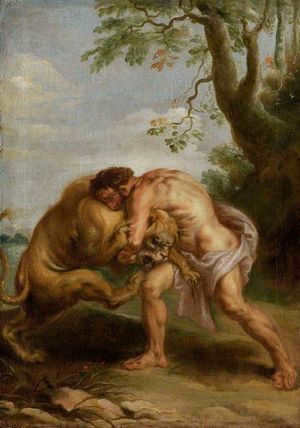
Heracles battling a lion.
Indeed, the Greeks once adopted many things from the Babylonians, including their knowledge of the stars. However, the ancient Greeks had a tendency to associate the constellations in the sky with their own myths, thus transforming our “lion of the stars” into the legendary hero Heracles and his epic duel with the ferocious lion.
Nevertheless, the Greeks were not the only civilization to link their myths and legends with the constellation of Leo. The ancient Egyptians, for instance, believed that the greatest rulers and pharaohs were born when the Sun was in Leo. As for the Babylonians and Persians, they associated Leo with the element of fire, recognizing the extraordinary heat that coincided with the period of Leo.
Description of Leo Constellation
Leo Constellation is ranked fifth in terms of magnitude among all constellations. It is intersected by both the ecliptic and the celestial equator.
Due to its significance in the night sky and the abundance of bright stars, Leo Constellation serves as a convenient reference point for locating many other less visible constellations. In the Northern Hemisphere, Leo Constellation can be observed throughout the year, but it reaches its highest point above the horizon during the beginning of spring. As a result, astronomers have classified it as one of the “spring constellations”.
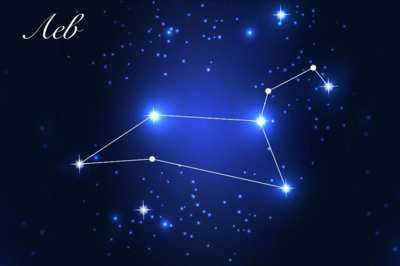
Where can you find the Leo constellation?
The Leo constellation can be found in the northern hemisphere, situated between the neighboring constellations of Virgo and Cancer. As a zodiacal constellation, Leo is positioned along the ecliptic, which is the path the Sun travels along throughout the year. This path is visible from Earth and provides an excellent opportunity to observe Leo.
In addition to its proximity to Virgo and Cancer, the Leo constellation is also located near other well-known neighbors such as the Big Dipper, Hydra, Lynx, and Veronica.
How to locate the Leo constellation?
There are two methods to locate the Leo constellation: the first method involves observing the Moon as it approaches and indicates the direction of the constellation (in this scenario, the Moon acts as a sort of pointer). The second method entails finding the Leo constellation using another easily visible constellation, such as the Big Dipper.
Therefore, if you observe the Big Dipper, and envision water pouring out from its far side, this water would fall… directly onto the back of the Lion’s neck.

The primary celestial bodies in the Leo constellation
A collection of six brilliant stars, arranged in a distinct sickle shape, constitute the lion’s head. Taking the lead in luminosity, Regulus (Alpha Leo) serves as the focal point of the lion’s heart. Denebola (Beta Leo) stands as another prominent star, adorning the tip of the lion’s tail. Positioned on the lion’s cheek, Algieba (Gamma Leo) carries the meaning of “forehead” in its name. Lastly, the star Zosma (Gamma of Leo) embellishes the thigh of the majestic beast.
Aside from these prominent stars, the Leo constellation boasts a multitude of other celestial bodies, approximately 120 in number. However, due to their dimness, observation of these stars typically requires the use of a professional-grade astronomical telescope.


A star map depicting the Leo constellation.
Now, let’s take a closer look at the primary stars within the Leo constellation.
Regulus (Alpha Leo)
Regulus is the most brilliant star in the Leo constellation, as well as the 22nd brightest star visible in our night sky. Interestingly, Regulus is not a single star, but rather a complex system of four stars, which are divided into two pairs. The first pair includes a large, young star known as Regulus A, which is blue in color, and a white dwarf. These two stars orbit each other rapidly, completing a full revolution in just 40 days. The second pair of stars in the system consists of orange and red dwarfs, which are located approximately 100 astronomical units apart. However, these stars are often obscured from view on Earth due to the overlapping presence of the Moon, Venus, and Mercury.
Regulus is a spectroscopic double star of the main sequence, according to astronomical classification. It is situated approximately 70 light years away from our planet. The name given to this star dates back to the time of Arab medieval astronomers, who affectionately referred to it as “Kalb Al-Asad”, translating to “Heart of the Lion” in Arabic. European astronomers, on the other hand, named it Regulus proper, deriving from the Latin word for “Prince”.

Denebola (Beta Leo).
Denebola, also known as Beta Leo, is the second brightest star in the sky, ranking 61st overall. Its name is derived from the Arabic term “Danab al-Asad,” which translates to “tail of the lion.” With a mass approximately 1.8 times that of our Sun, Denebola shines 12 times brighter than our own star. This hot white giant exhibits constant fluctuations in brightness due to its constantly moving layers of matter, causing it to flicker and change in brilliance every 2-3 hours.
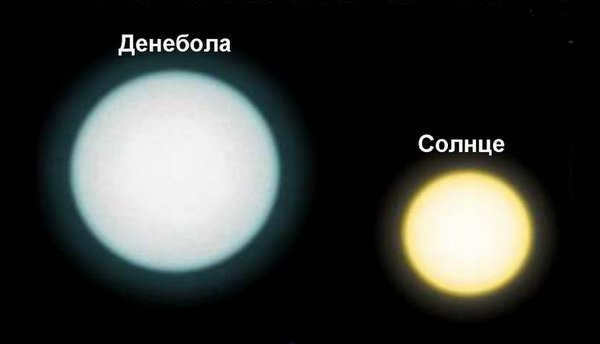
Algieba (Gamma Leo)
Similar to Regulus, Algieba is not a regular solitary star, but a complete stellar system consisting of two stars that are significantly larger and brighter than the Sun. The first star in the pair, Algieba A, is an orange giant, shining 180 times brighter than the Sun. Its companion, a yellow star, is slightly smaller and shines 50 times brighter than the Sun. Even with a small amateur telescope, one can easily observe the star pair Algieba. Algieba is situated approximately 130 light years away from our location.
The name “Algieba” is derived from the Arabic term “Al Jeba,” which translates to “forehead.” Interestingly, this star (or rather star pair) that is positioned below Regulus actually represents a lion’s mane.
Galactic Clusters and Constellations
Leo, the constellation of stars, houses an astronomical phenomenon known as an “asterism” – a cluster of stars that forms a distinct shape. The asterism in Leo resembles a sickle and is not only composed of stars but also entire galaxies.
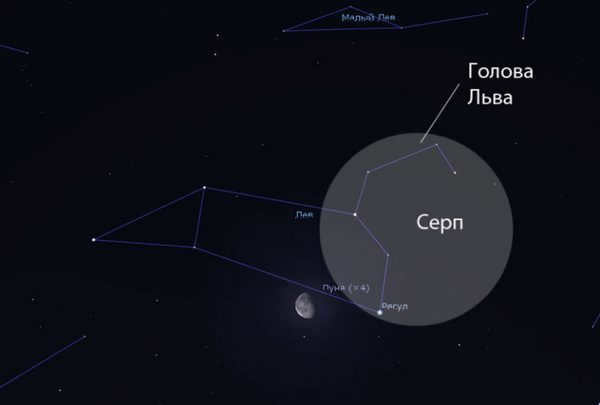
Astronomers are particularly fascinated by the Leo Triplet, a group of galaxies that includes:
- Galaxy A
- Galaxy B
- Galaxy C
Similar to our neighboring Andromeda and our own Milky Way, these galaxies are also spiral in shape and are located approximately 35 million light years away from us. In the late 20th century, astronomers observed three supernova explosions in the galaxy M66.
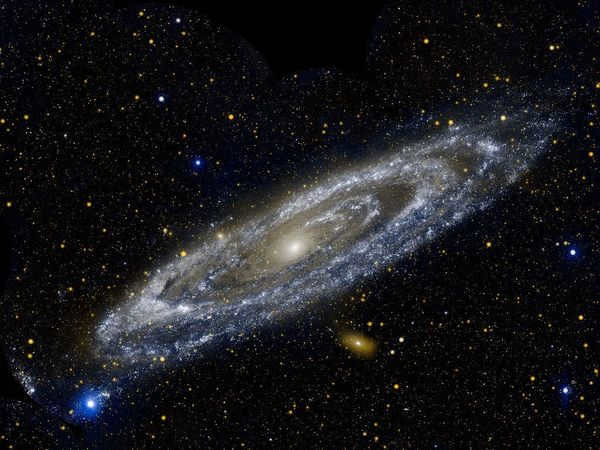
The Leo constellation and its connection to astrology
The Leo constellation is the fifth zodiacal sign in astrology, which is closely related to the field of astronomy. Throughout history, and even today, there has been a widespread belief that being born under a specific star sign, such as Leo, can greatly impact a person’s destiny. However, it is important to approach these beliefs with skepticism, as astrology is considered a pseudoscience. Let’s explore the reasons behind this skepticism.
Recommended reading and helpful resources
- “Leo”. Constellationsofwords.com. Retrieved 2016-01-19.
- “Astronomers find the tiniest ‘exoplanets’ to date”. Toronto. Archived from the original on January 16, 2009.
- L. Phil Simpson (Springer 2012) Guidebook to the Constellations: Telescopic Sights, Stories, and Legends, p. 235 (ISBN 9781441969415).
- Wilkins, Jamie; Dunn, Robert (2006). 300 Astronomical Objects: A Visual Reference to the Universe. Buffalo, New York: Firefly Books. ISBN 978-1-55407-175-3.
- Prostak, Sergio (January 11, 2013). “Largest Structure in the Universe Discovered”. scinews.com. Retrieved January 15, 2013.
Video of the Leo Constellation
Author: Pavel Chaika, Editor-in-Chief of Poznavaika magazine
While composing this piece, my aim was to create an engaging, informative, and high-quality article. I would greatly appreciate any feedback or constructive criticism in the comment section below. Additionally, if you have any questions, suggestions, or wishes, feel free to contact me via email at [email protected] or reach out to me on Facebook. Thank you for your time and interest.
This article is also available in English – Leo Constellation: Location, Myth, Picture.
I believe that the name given to this particular arrangement of stars is Leo, as when they are connected, they form a shape that bears a striking resemblance to the body of a majestic creature – a lion.
Create a replica of the Leo constellation by constructing a model.
To fashion a model of the Leo constellation, you can opt for an applique approach. Begin by selecting a sheet of dark blue cardboard that closely resembles the color of the nighttime sky. Next, carefully sketch out a design that accurately portrays the Lion constellation. To ensure accuracy, make sure to position the stars in the same arrangement as depicted in the accompanying photograph:

Following that, adhere the stars that you have cut out of yellow or silver paper onto the cardboard in accordance with the provided diagram. This will create the Leo constellation.
During the nighttime, when it is dark outside, locate the Leo constellation in the sky. If necessary, consult an atlas for guidance.
In order to find the Leo constellation in the sky, you need to first locate the Big Dipper. By following a curved line from the handle of its dipper, you will first come across the star Arcturus and then the star Spica. To the right of these stars, you will notice a shape resembling a sickle. This is the Leo constellation.
What new information have you acquired about the sun and the stars?
I discovered that our planet is closest to the Sun, which is also the nearest star to us. Although stars appear small in the sky, they are actually incredibly large, but their distance makes them seem small. Previously, I believed that we can see the Sun during the day because it emits light. However, the Sun actually creates daylight by radiating its rays onto everything.
Why are stars not visible in the daytime sky?
Stars are not visible in the daytime sky because the Sun’s illumination is much stronger. The Sun’s light outshines the light of other stars that we see from Earth, mainly because of its proximity to us.
Why do stars become visible at night?
Stars become visible at night when the Sun dips below the horizon. Although we cannot see the Sun itself, we are able to observe other stars that are fainter and farther away.
What is the method of locating the Leo constellation in the sky?

Legend of the Leo Constellation
In Greek mythology, the constellation of Leo is associated with the Nemean lion, which was slain by the renowned hero Heracles as part of his famed twelve labors.
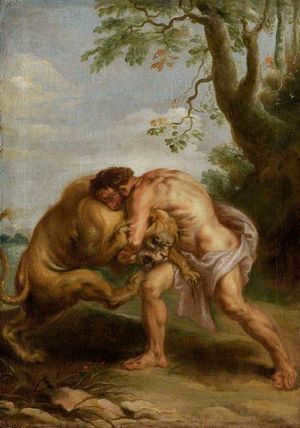
The image shows Heracles engaged in a battle with a lion.
However, the constellation of Leo has been linked to various myths and legends by different civilizations. The ancient Egyptians believed that the greatest rulers and pharaohs were born during the period when the Sun is in Leo. Similarly, the Babylonians and Persians associated Leo with fire, as this period was known for its intense heat.
Description of the Leo constellation
Leo constellation holds the fifth position in terms of size among all constellations. It is intersected by both the ecliptic and the celestial equator.
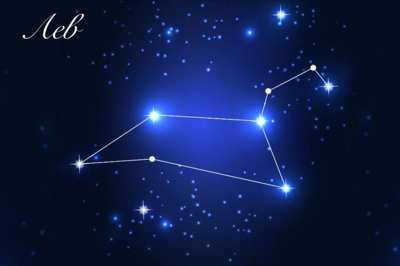
Where can you find the Leo constellation?
You can find the Leo constellation in the northern hemisphere, nestled between the neighboring constellations of Virgo and Cancer. Being a zodiacal constellation, Leo can be found along the ecliptic, which is the path that the Sun takes throughout the year. This celestial pathway is visible from Earth.
The Leo constellation also shares its neighborhood with other well-known constellations such as the Big Dipper, Hydra, Lynx, Veronica, as well as the aforementioned Virgo and Cancer.
How can I locate the Leo constellation?
There are two methods to locate the Leo constellation. The first method is to observe the Moon as it approaches and points towards the constellation, acting as a sort of cursor. The second method involves using another easily visible constellation as a reference point, such as the prominent Big Dipper.
By focusing on the Big Dipper, imagine water pouring out from the opposite side, and you will find that it falls right on the back of the Lion’s neck in the Leo constellation.
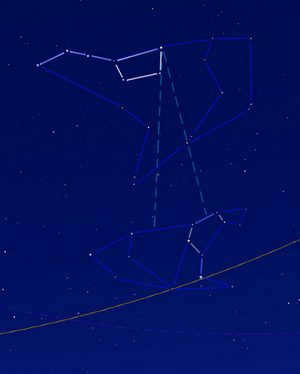
The primary stars in the Leo constellation
Apart from the prominent stars, there are numerous other stars in the Leo constellation that lack brightness (approximately 120 in total), with the majority of them only visible through a high-powered astronomical telescope.
A chart depicting the Leo constellation is presented here.
Now, let’s delve into the primary stars of Leo constellation with more intricacy.
Regulus (Alpha Leo)
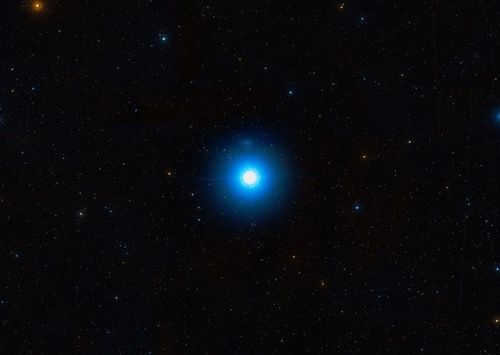
Denebola (Beta Leo)

Gamma Leo, also known as Algieba
Exploring the vastness of the universe
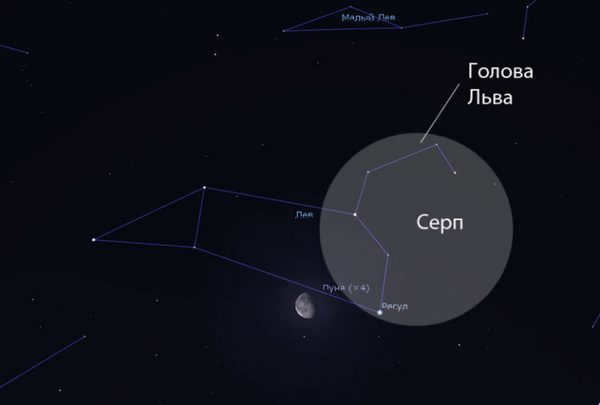
Astronomers are particularly intrigued by the Leo Triplet, which consists of the following galaxies:
Similar to our neighboring Andromeda and our own Milky Way, these galaxies are also classified as spiral galaxies and are located approximately 35 million light-years away from us. In the late 20th century, astronomers observed three supernova explosions in the galaxy M66.
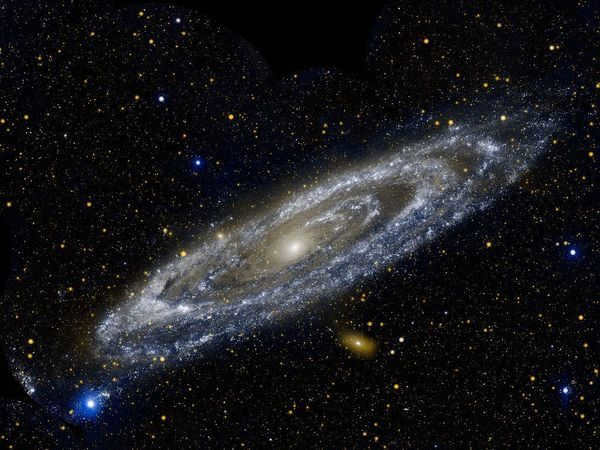
Astrology and the Significance of the Leo Constellation
The Leo constellation holds great importance in astrology, as it is the fifth zodiacal sign that influences a person’s destiny. Throughout history, and even in present times, many individuals believe that being born under the Leo sign has a profound impact on their lives. However, it is important to approach astrology with skepticism, as it is considered a pseudoscience.
If you are interested in learning more about the Leo constellation, we offer a report-presentation that delves deeper into this topic. The presentation consists of 5 slides and can be downloaded for further study. Feel free to use the player to view the presentation, and if you find the material useful, don’t hesitate to share it with your friends through social buttons. Additionally, you can add our presentation site to your bookmarks for easy access in the future!
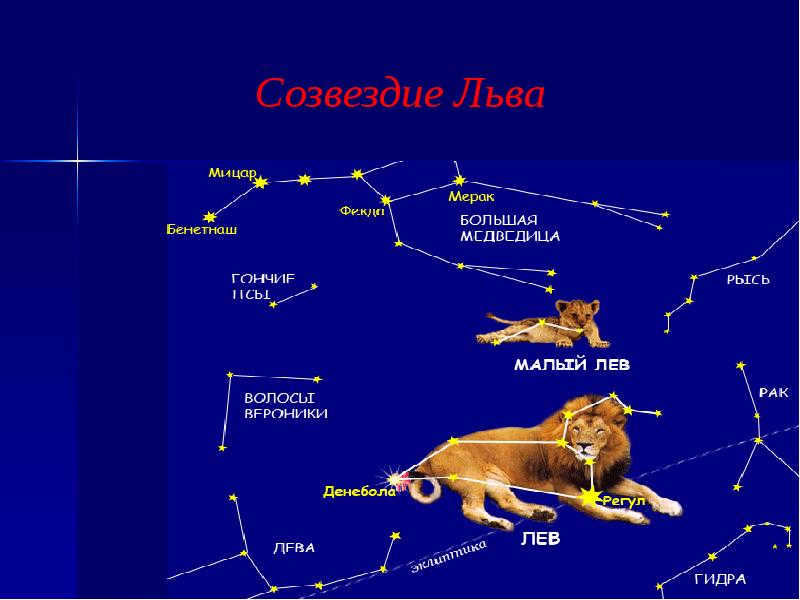

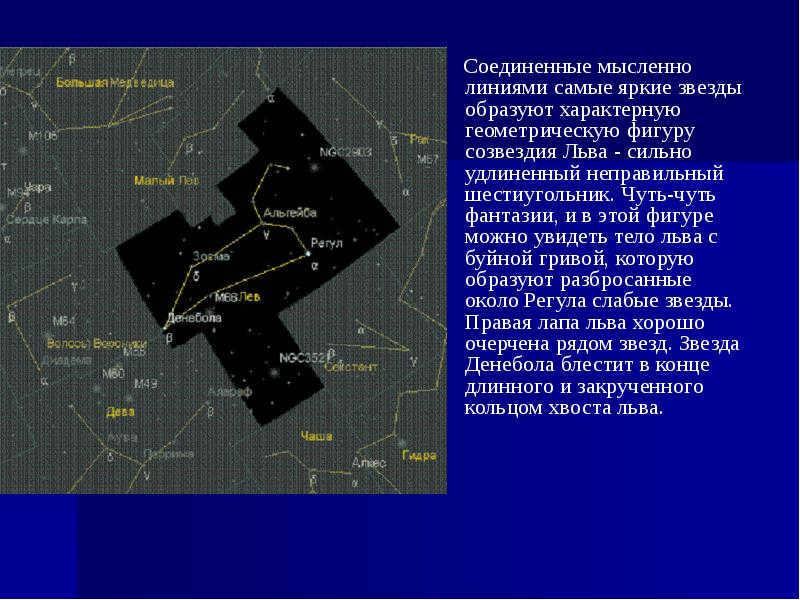

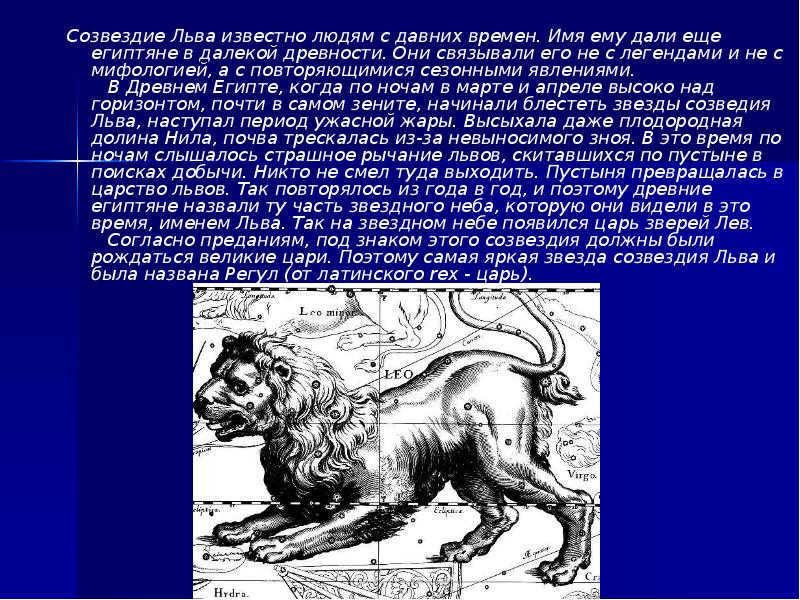
Mentally connected by lines, the brightest stars create a distinctive geometric shape known as the Leo constellation – a highly elongated and irregular hexagon. With a touch of imagination, one can envision the body of a lion with a majestic mane, formed by the scattered faint stars near Regulus. The lion’s right paw is clearly defined by a series of stars. At the end of the lion’s long and curved tail, the star Denebola shines brightly. Mentally connecting the brightest stars, we can see the characteristic geometric figure of the Leo constellation – a highly elongated and irregular hexagon. With a bit of creativity, this shape resembles the body of a lion with a luxuriant mane, made up of faint stars scattered around Regulus. The lion’s right paw is well delineated by a line of stars. The star Denebola shines at the tip of the lion’s long and tapered tail.
Leo constellation contains numerous fascinating binary stars, variable stars, and galaxies, although they can only be observed using advanced telescopes. One particularly intriguing star is Regulus (α of Leo), which is approximately three times larger than the Sun and has a surface temperature of 14,000 K. Positioned at an angular distance of 3' from Regulus is a faint yellow star with a magnitude of 7m,6 (not visible to the naked eye), almost identical to our Sun. It is believed to be a companion to Regulus due to their shared proper motion in space. However, the orbital movement of this companion star around Regulus has not yet been detected.
The constellation Leo has been known to humans since ancient times. It was named by the Egyptians in ancient times. They associated it not with myths and legends, but with recurring seasonal phenomena. In ancient Egypt, when the stars of Leo began to shine high above the horizon in March and April, there would be a period of intense heat. The fertile Nile valley would dry up and the soil would crack due to the unbearable heat. During this time, the terrifying roars of lions could be heard at night as they roamed the desert in search of prey. No one dared to venture out. The desert became the domain of the lions. This pattern repeated year after year, leading the ancient Egyptians to name this part of the starry sky the Lion. Thus, the king of beasts, the Lion, appeared in the night sky. According to legends, great kings were destined to be born under the sign of Leo. This is why the brightest star in the Leo constellation was named Regulus, which means “king” in Latin.
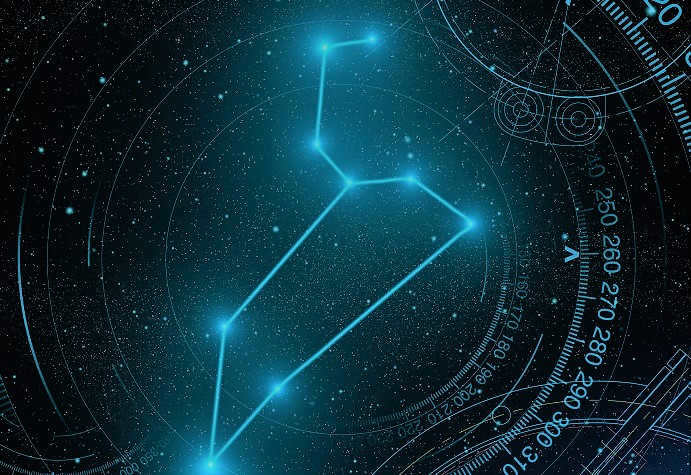
Where can the Leo constellation be found?
The Leo constellation, also known as the Lion, can be found in the Northern Hemisphere. Specifically, it is situated between the constellations of Virgo and Cancer.
Being a part of the zodiacal circle, Leo is located along the ecliptic. This means that it lies on the path that the Sun appears to make throughout the year as observed from Earth.
Additionally, Leo has several notable neighboring constellations in the night sky, including the Lesser Leo, the Big Dipper, Virgo, Cancer, Hydra, Lynx, Sextant, Veronica’s Hair, Bowl, and Lynx.

Stars in the Leo Constellation
Indeed, the Leo constellation contains numerous fascinating celestial bodies. Regrettably, the majority of them are only visible through a telescope equipped with a sufficiently large main mirror.
Denebola-Beta is the second brightest object in the constellation of Leo.
Algieba-Gamma is a binary system consisting of a giant star and its companion.
Zosma-Delta is a main sequence star that appears white in color.
Hort-Theta is similar to Delta.
Kappa is a binary system. Interestingly, it is named after the Arabic word for “muzzle”.
Lambda is a K5 class star. Its name comes from the Arabic word for “appearance of a lion”.
Omicron is a binary system with a giant star and a main-sequence star.
This particular star is a supergiant and has a distinct white color.
Zeta is a giant star. It is often associated with a scythe.
Rasalas-Mu is a star belonging to the K3 class. It is also known for protruding from the northern part of the head.
Epsilon is a bright giant star located in the southern part of the head.
Ro is a binary star, while Iota is a system consisting of two stars that can be analyzed through their spectra.
Sigma is characterized by a bright white star with a blue tint.
Wolf 259 is a small red star, and it holds the distinction of being the nearest star to Earth in its region.
Additionally, we have the stars Gliese 436, CW, and R included in this set.
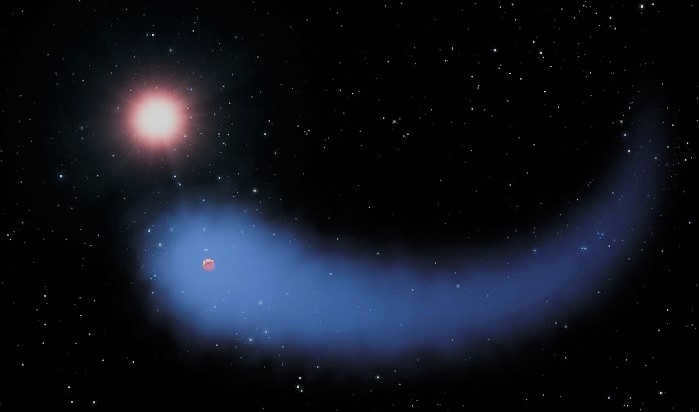
We are all trapped in the marsh, but there are those among us who are gazing at the stars
Oscar Wilde
Other objects in the sky
The collection of spiral galaxies that form the majority of the constellation include M 65, M 66, M 95, M 96, NGC 3628, NGC 3596, NGC 2903, NGC 3626, NGC 3607, and NGC 3593.
In addition, Leo is also home to elliptical galaxies such as M 105, NGC 3384, NGC 3842, and NGC 3357.
By the way, scientists have recently made a fascinating discovery – the Lion’s Ring. Surprisingly, it is a massive cloud composed of helium and hydrogen.
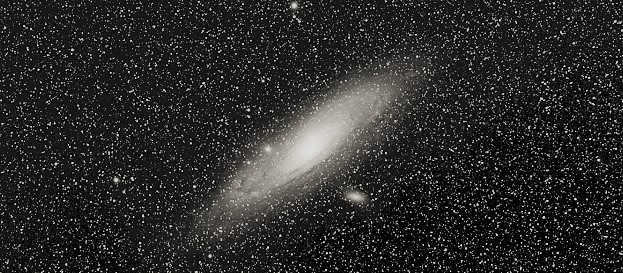
Asterisms
In ancient times, the star cluster in the tail region was known as the Tassel. However, it was later identified as a constellation. Interestingly, it is now referred to as Veronica’s Hair.
Furthermore, one of the six main stars of Leo forms the well-known asterism called the Sickle. Its shape is often confused with that of an inverted question mark.


Mythology
There are numerous tales regarding the origin of the Leo constellation.
One such story is the ancient Greek myth of the Nemean Lion. Heracles managed to defeat the monstrous creature and offered it as a sacrifice to Zeus. This was actually the first of Hercules’ renowned accomplishments. In order to commemorate his son’s victory, the god of thunder transformed the beast into a constellation.
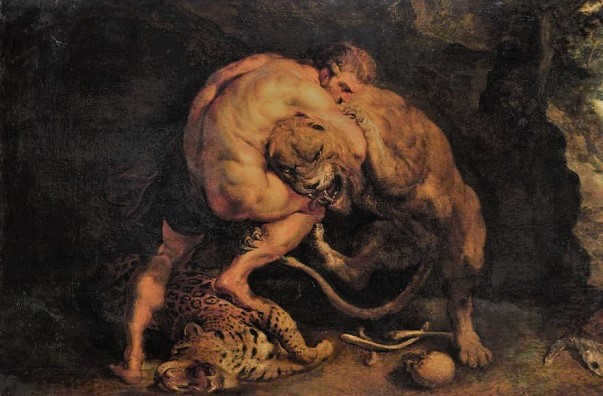
Heracles battling the Nemean lion (illustration)
Furthermore, ancient civilizations often linked celestial bodies with the changing seasons. For instance, the Egyptians named the stars in the constellation of Leo after the time when they shone brightest in the sky, which coincided with the peak of summer heat. This period also turned the desert into the domain of the mighty lion, often referred to as the king of beasts.
Moreover, Leo is also connected to the mythological tale of the origin of its brightest star, Regulus. As its name suggests, Regulus represents the heart of the lion.
Exploring the Leo Constellation
Astronomy enthusiasts in Russia have the privilege of enjoying a splendid view of the Leo constellation. The best time to observe this celestial wonder is during the months of February and March.
Furthermore, from August 10 to September 15, the Sun aligns with the Leo region, providing another opportunity for observation.
Leo is rightfully considered one of the oldest constellations, having been discovered by our ancient ancestors. Its majestic form resembles that of a mighty lion, symbolizing royalty.
Despite the relatively low brightness of its stars, observing the Leo constellation remains captivating. Its sheer size makes it one of the most prominent features in the spring sky.
“Constellations in the distance,
Many have been condemned to vain meditations.
Come to your senses, save your sanity–
The wisest of the wise are at a dead end.”
Omar Khayyam
However, it is quite easy to deduce that if there exists a Small Lion, there must also exist a Big Lion or simply a Lion. This pertains to the Leo constellation and the narrative will continue onward. The Leo constellation is situated directly south of the Small Lion, and by observing the outlines of the shining stars, one can effortlessly identify the constellation in the nighttime celestial sky.
Leo is one of the 13 constellations in the zodiac. It was named after the lion that Hercules had to defeat as one of his 12 labors. Many historians believe that the constellation received its name long before the Greek myth, such as in ancient Mesopotamia where it was known as the “Big Dog”. It is included in Claudius Ptolemy’s Almagest, a catalog of the night sky. For a long time, there was no mention of this constellation in Russian sources. It wasn’t until the 11th century, in the manuscript “13 Words of Gregory the Theologian in Old Slavonic Translation”, that the constellation was first mentioned.
Characteristics
| Latin name | Leo |
| Abbreviation | Leo |
| Area | 947 square degrees (12th place) |
| Direct ascent | From 9 h 15 m to 11 h 52 m |
| Declination | From -6° to +33° 30′ |
| Brightest stars ( Regulus rotation modeling |
Denebola – The second brightest object, associated with the constellation Leo, is known as the “tail” of the lion.
Algeiba – This stunning double star, located in the constellation Leo, represents the majestic mane of the lion. Upon closer observation, a slightly orange star can be seen alongside its noticeable golden companion. The orbital period of this double system is approximately 510 years.

There are several other stars in the Leo constellation that are worth noting, including 54 Leo and 88 Leo, which are double stars, and 90 Leo, which is a triple star. When observing the star 90 Leo, it is possible to observe two prominent blue dots along with a clearly visible companion at a close distance.
Stars that vary in brightness
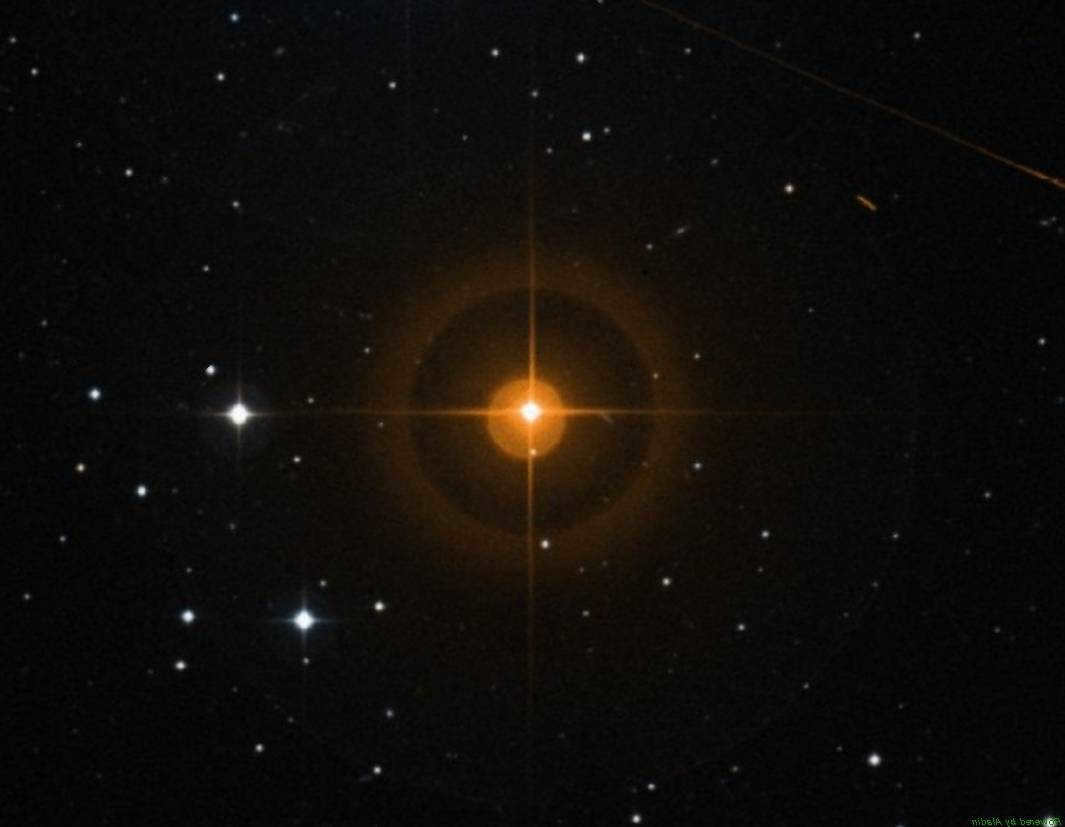
Another star that can be found in Leo is R Leo, a well-known variable. Its brightness ranges from 10 to 5 magnitudes. It is particularly fascinating to observe this star during its minimum brightness phase and witness its “ignition” process, which lasts for 312.5 days.
Another intriguing celestial object can be found deep within the constellation – Wolf 359, a red dwarf that is a mere 7 light-years away from us. Due to its low luminosity, this star can only be observed with the help of telescopes.
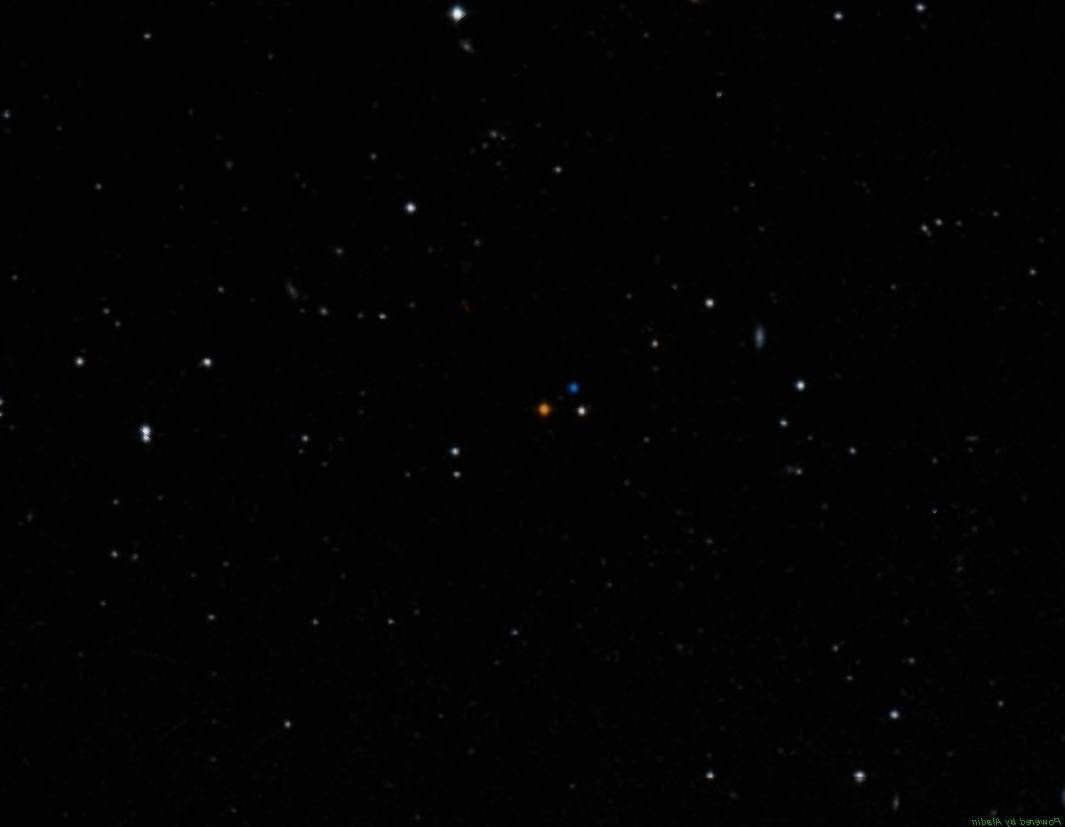
In the picture, we can see the prominent orange star known as Wolf 359 located at the center.
Exploring the Universe
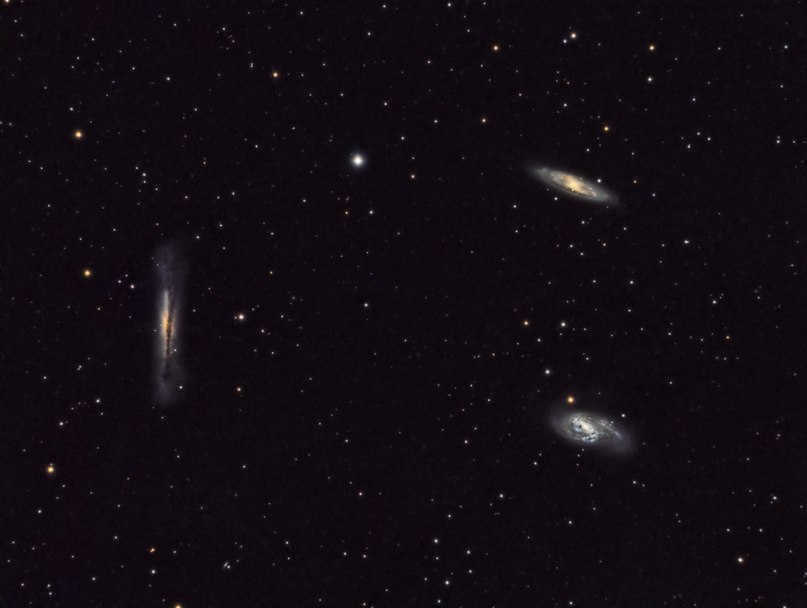
With a telescope measuring 7-8 centimeters, you have the opportunity to observe not only stars, but also entire galaxies. By focusing your attention on the constellation Leo, you will easily spot the “Leo Trio”, which consists of the NGC 3628, M 65, and M 66 galaxies. Among these three, M 66 stands out as the largest galaxy. It is situated approximately 35 million light years away. This galaxy boasts a well-defined nucleus and arms that are positioned slightly above the galactic plane. Scientists believe that this displacement is a result of the gravitational pull exerted by two neighboring galaxies. If you have access to a more powerful telescope, you will be able to explore and analyze the structure of M95, M96, M105, and NGC 2903.

Within the Leo constellation lies a group of stars known as the “Sickle” asterism. This particular configuration is comprised of six stars, namely α, η, γ, ζ, μ, and ε. The shape of the Sickle closely resembles that of a sickle or a question mark. The brightest star within this constellation, Regulus, resides at the point of the question mark.
The Origins
